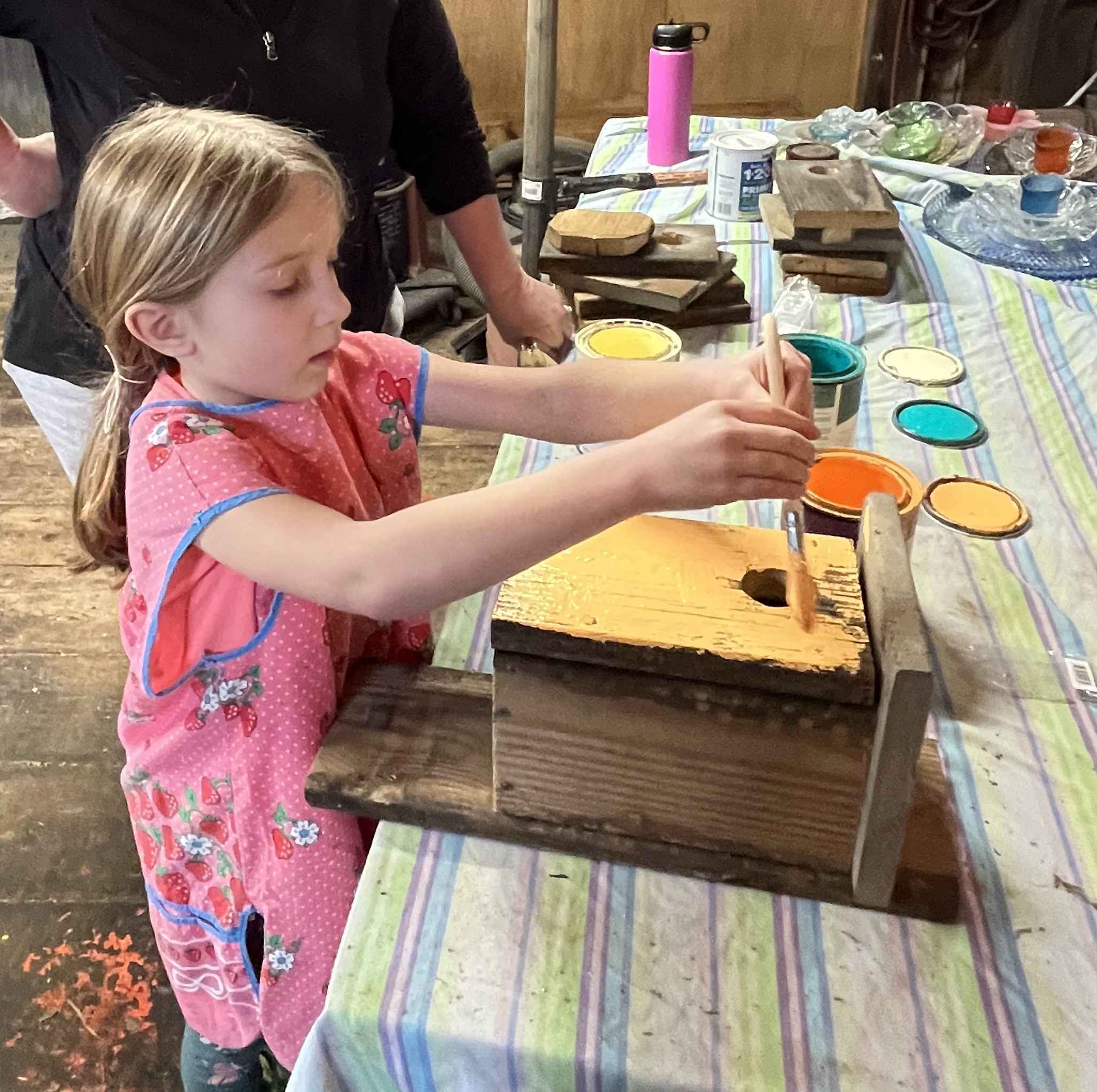
I hear the word diversity in every regenerative agricultural context. Scientists say, “we are in a biodiversity crisis.” I find myself simply trying to honor the next generations by creating a diverse farm habitat where nature runs the operation. This idea cascades around the pasture and its patchwork of hedgerows, woods, watercourses and wetlands.
A piece of that biodiversity is in front of me here in April. This time of year is critical in reconnecting with our flying pest managers. As with any springtime activity on the farm, maintenance on your bluebird houses, bat houses and owl dwellings should be a priority. From my vantage point, it’s a profitable venture, as they consume large quantities of destructive insect and rodent pests, naturally.

Paying homage to our state bird, I rather enjoy the yearly bluebird box monitoring and cleanout since it signals the greening of my favorite crop. Armed with a cadre of screws, wood pieces (usually roofs and floors), essential hand tools, gloves, grandchildren and camera at the ready, we set out to do some house cleaning.
I must caution everyone to the fact that many critters like these tidy little houses. It’s not out of the question to reach up into the old nest and suddenly feel field mice using you as a ladder! Every box seems to tell a different story. Bees, wasps and spider nests are frequent inhabitants as well as the stubborn sparrows and wrens filling them full of twigs and old feathers. Cleaning these out and starting fresh equates to the satisfaction of a good barn white-washing.
I am always intrigued how, well-seasoned barnwood, attracts the Bluebirds and swallows even though they may lack the box specifications by this rough carpenter and his granddaughters. I believe it’s probably more about location then attractiveness which is a plus for my simple, decent and affordable structures. This fits me well as a 6-inch board scrapper.
By the time Emerson Grace and I tidied up the insides and replaced any ailing roofs on our Bluebird trail, it wasn’t 20 minutes, when I saw the familiar flash of blue scoping out the renovated digs. How did they know? It’s certainly a pleasant mystery for an inspired grass farmer. They are also very photogenic; maybe as praise for giving them a sturdy home and a habitat where they can thrive. We’re doing our part to enhance our state bird’s presence against the constant barrage of habitat destruction.
It makes sense as we are in one of the 8 NYS DEC’s hot zones for building more grasslands suitable for endangered species. Although my beloved Bluebirds of happiness are important to my ecosystem, I’m also finding out that grassland bird species such as the Northern Harrier, Upland Sandpiper, Short-eared Owl, Horned Lark, Sedge Wren, Vesper Sparrow, Grasshopper Sparrow, Henslow’s Sparrow, Bobolink, Eastern Meadowlark, and Savannah Sparrows have seen an astounding 80-99% decline in abundance in my lifetime.
Working on these specific biodiversity projects isn’t without a bit of strife, as they have more sensitive nesting needs and conflict with our grazing practices. According to the “Experts”, these birds are area-dependent species, meaning they need large unbroken expanses of grasslands to thrive and reproduce which depend on several factors such as location, shape, surrounding habitats, and vegetative composition. Funny thing is; birds don’t read the standards and we have seen a proliferation of birds and wildlife, hanging with the cows on highly-managed perennials. I’ll surmise that’s symbiosis.
My honest struggle is in finding balance as a “regenerative-minded, climate-friendly” farmer for New York and a respectful steward of my next generation’s environment. If Pop Pop optimizes production and profit, it seems my flora and fauna can be negatively impacted. If I favor my habitat over profits, this can also impact our farm’s ability to thrive. I have thought about it deeply for a long time and it has come down to this question—What would Mother Nature do?
Folks have suggested I rid the grasslands of burping, farting cows so they won’t compete with our “Empire birds”. That reasoning doesn’t pass the resiliency test as exhibited by the once, prairie ecosystem where birds and buffalo co-existed. My interpretation continues to manifest in providing a diverse grassland ecosystem palate which yields to nature to figure it out.
What I can do as a human is make management decisions that enhance the diversification of the landscape and respect the grandchildren, yours and mine, while running on solar energy, plants, animals microbes, faithful people and sequestered carbon and water. Does it always work? No. But shouldn’t we try? “Build it and they will come” is a solid mantra for our context.
O bluebird, welcome back again, Thy azure coat and ruddy vest, Are hues that April loveth best…. ~ John Burroughs
Published in Country Folks Newspaper


 Local cemeteries could use some help
Local cemeteries could use some help »
»